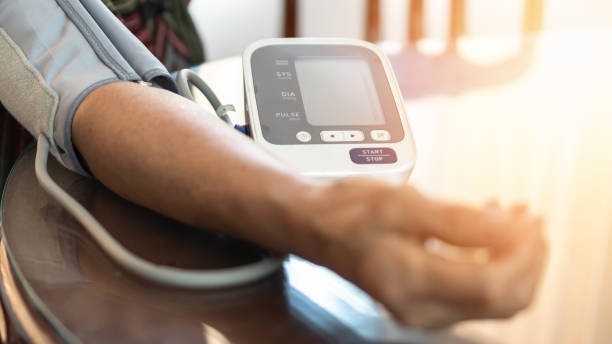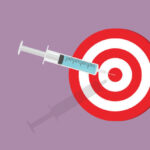Remote patient monitoring (RPM) services are becoming increasingly important for processing real-time patient vital sign data, especially as RPM technologies drive digital healthcare data collection advances. However, the acceleration of big data presents new challenges and concerns for qualified healthcare professionals. Healthcare staffing challenges also play a significant role.
Leading remote patient monitoring companies can offer solutions to help healthcare organizations overcome three key data-related challenges:
- Data security – Achieving HIPAA compliance and safeguarding sensitive patient data.
- Data accuracy – Ensuring high-quality data to enable better health outcomes.
- Data management facilitates early disease detection, saves time, and reduces costs.
This article spotlights potential remedies that specialized RPM service providers can provide to assist healthcare institutions facing these data hurdles.
Remote Patient Monitoring Services: What Challenges Do They Solve?
An increase in regular streams of patient data is resulting in improvements in precision medicine and patient outcomes. To incentivize medical organizations, Medicare introduced a set of 5 CPT Codes: 99453, 99454, 99457, 99458, and 99091. CPT 99457, which covers treatment management, can be billed ‘incident to’ under general supervision. Medicare providers can contract third-party companies to assist with remote patient monitoring services.
This allows healthcare organizations to manage more patients who qualify for remote patient monitoring and generate more revenue without significantly impacting workflow. An RPM services company can outsource device set-up, education, and data review duties. By and large, outsourcing can substantially save clinical staff time and minimize changes to existing workflows.
Additionally, healthcare organizations can explore remote patient monitoring and telehealth accreditation and certification opportunities. These accreditations can help demonstrate quality, safety, and compliance in remote care delivery.
Remote Patient Monitoring Devices
Though remote patient monitoring has many benefits, there’s much to remember from the perspective of risk management, security, and compliance. This is where an RPM services company can help. Some third-party vendors provide remote patient monitoring devices that medical systems can use to facilitate remote patient care. At the same time, others offer a complete platform or flexible options.
As an illustration, RPM services companies like Tenovi are the conduit between medical device manufacturers and remote patient monitoring companies. Tenovi integrates its seven Bluetooth RPM devices with a cellular gateway and the Tenovi cloud. With APIs, clinicians can receive and review patient health data through their platform. In addition, Tenovi offers partner cellular RPM devices.
The following section addresses the challenges and solutions that quality RPM service companies can provide.
Data Security Challenges and Solutions
FDA-cleared cellular and Bluetooth medical monitoring devices collect a wide range of patient vital sign data like weight, blood pressure, blood sugar, blood oxygen levels, and heart rate. Data gleaned from at-home patient monitoring provides more significant insights into diagnosing and treating health conditions, especially chronic diseases. AI analytics is believed to further increase capabilities in predictive medicine, allowing more timely intervention and management of conditions.
Even so, the susceptibility of patient data stored on medical devices is among the biggest challenges in RPM. RPM services companies must follow HIPAA-compliant processes to ensure compliance and patient data security. For instance, they encrypt patient information when the device is not in use and when the data is transmitted. Henceforth, you and the RPM service company must have a Business Associate Agreement (BAA) before sharing patient-protected health information.
In addition, the HIPAA Security Rule requires healthcare organizations to safeguard the storing of electronic protected health information (e-PHI). These general practices include:
- transmission security
- authentication protocols
- controls over data access and integrity
- regular data security audits
In terms of security, Tenovi separates all client data to ensure security & HIPAA compliance. API keys are hashed and encrypted for security purposes.
How Can RPM Solutions Improve Data Accuracy?
Remote patient monitoring solutions have revolutionized gathering, analyzing, and interpreting data. With the advent of data-driven remote monitoring, clinical decision-making can be based on evidence-based decisions and a physician’s experience and intuition. Patients and physicians can be alerted if a vital sign reading exceeds the set threshold and immediately prevent an emergency.
Some RPM vendors specialize in chronic disease management for conditions including:
Other third-party RPM vendors offer multiple at-home medical monitoring devices that can be integrated into their remote patient monitoring platform across many conditions, including acute and chronic care. The speed at which data is transmitted and the accuracy of the data is vital in providing better outcomes in healthcare. Therefore, FDA-cleared monitoring devices and software quality are essential to better real-time monitoring, data analysis, and improved accuracy, which means better patient outcomes.
Data Management Challenges Made Easier with Remote Patient Monitoring
Remote patient monitoring solutions make challenges associated with generating big data easier. RPM devices electronically collect and transmit patient vital sign data and convert it into an easily readable form. This process generates reports and tracks patient progress. They ultimately enable physicians or other qualified healthcare professionals to make informed decisions about diagnosis and treatment. Treating a disease in the early stage can be more productive, save time, and reduce overall health costs than treating it once it has progressed.
In addition, managing data properly can improve patient outcomes in the following ways.
- Empower patients to engage with and access their health histories.
- Keep providers in sync with patients’ health status for faster assessment.
- Potential to diagnose, treat, and prevent escalation of medical issues early.
- Improves access to streamlined quality health care.
- Saves patients and healthcare systems time and money.
Many RPM service companies provide qualified clinical staff that can perform RPM services. For instance, Tenovi clinical staff members undergo an extensive credential verification process so physicians do not have to worry about fraud charges. Additionally, physicians can access the Tenovi RPM portal whenever they’d like. This is where they can access their patients’ data, time spent on RPM services, and descriptions of services performed.
Remote Patient Monitoring Platform & Software Integration
When a medical organization adopts new digital health technologies such as remote monitoring, it may face challenges with current applications and systems and implementing a new software system.
For this reason, you want an RPM services provider that can seamlessly overcome integration & implementation challenges, including design, testing, and execution. The best RPM services companies follow networking best practices to integrate proprietary and third-party APIs flawlessly.
With this in mind, the seamless integration of Electronic Health Records (EHR) is an essential component of RPM. When the EHR and RPM applications are well integrated, they are connected in a workflow. This means that once vital sign data is recorded on the FDA-cleared medical monitoring device, it merges in the EHR, expediting record collection by removing the need to duplicate the patient data. Therefore, the patient data lives in one place.
Some RPM service companies provide remote monitoring technology and leave it up to the healthcare organization to use the devices as they see fit. Conversely, Tenovi works exclusively with companies that would like to offer remote patient monitoring solutions to healthcare providers.
Remote Patient Monitoring Services: How Tenovi Can Help
The Tenovi cellular gateway seamlessly automates data transfer of a growing number of FDA-cleared devices to care management platforms. Our API-driven fulfillment service automates device and automated supply delivery. At the same time, our client engagement platform automates ticketing support, billing, and device management. You can schedule your free demo to experience the difference Tenovi RPM devices can make.






